The Delaware River Joint Toll Bridge Commission (DRJTBC) today announced a proposed system-wide toll adjustment for 2026 that would offset rising construction-industry costs, maintain strong credit ratings, and finance new transportation-infrastructure improvements.
Under its proposed rate adjustments, the E-ZPass rate for Class 1 passenger vehicles (two axles and below eight-feet high) would rise 50 cents to a $2 toll. The corresponding TOLL BY PLATE rate for the same vehicle without E-ZPass would increase $2 to a $5 toll.
Meanwhile, the per-axle E-ZPass rate for vehicles eight-feet or above in height would rise $2 to a $6.50-per-axle toll rate. The corresponding TOLL BY PLATE rate for similar vehicles would rise $3 to an $8-per-axle toll rate.
The Commission charges higher rates to TOLL BY PLATE customers because that payment method involves higher costs for identifying vehicle owners and mailing billings. E-ZPass is the most frequently used toll payment method at Commission tolling points. The Commission stopped collecting cash at its high-traffic-volume toll bridges in January of this year and at its low-traffic-volume bridges in June 2024. Tolls are collected solely in the Pennsylvania-bound direction at Commission tolling points.
The Commission operates eight toll bridges and 12 non-revenue-generating “toll-supported” bridges that connect Pennsylvania and New Jersey along the fresh-water portion of the Delaware River. The agency also has 73 lane miles of road surface, 34 short-distance approach bridges (overpasses or viaducts) and various other maintenance and operational facilities.
The Commission is funded strictly by the tolls it collects at its eight toll bridges. It does not receive state or federal subsidies to run its transportation system and services. The Commission is unique among other toll agencies in the region because it is legally obligated – under identical statutes enacted by both states and ratified by Congress under the Compact Clause of the U.S. Constitution — to use a share of its tolls to operate and maintain 10 older low-capacity non-highway vehicular bridges and two other pedestrian-only crossings along the river. The Commission refers to these 12 spans as “toll-supported bridges.”
DRJTBC Executive Director Joseph J. Resta explained the toll changes are being considered in the wake of recent financial-metric-projections that show the Commission risks falling short in two key areas – General Fund Reserve Balance and Debt Service Coverage Ratio – in future years. Bond-rating firms regularly use these indices to determine the stability and credit worthiness of public agencies like the DRJTBC.
During the 2020 COVID pandemic, the Commission approved a Financial Resilience Policy in which it committed to maintaining a healthy reserve fund balance and strong coverage ratio. Despite being in a mature economic/traffic market, the agency has maintained A-grade bond ratings. The favorable borrowing rates have enabled the Commission to pursue and complete capital projects big and small. But construction-industry inflationary trends have risen to levels that could burden the Commission with rating downgrades and higher borrowing costs.
“In the past five years, hot-mix asphalt has risen 28 percent, concrete has risen 46 percent, structural steel has risen 66 percent, and fuel has risen 44 percent,” said Resta. “We still have supply chain issues delaying projects and increasing project costs despite the end of the pandemic.”
Citing the fact that substructures of some Commission bridges date to the early 19th century and some of the agency’s superstructures date to late 19th and early 20th centuries, Resta said: “Aging bridge infrastructure requires diligent oversight and constant care, year in and year out, and does not wait for a favorable economic climate to require funding for rehabilitation.”
If the proposed toll schedule rate adjustments were to be approved, the Commission’s toll rates for passenger vehicles would still remain lower than – or at least competitive with – the rates of other public toll agencies along the river.
At today’s Commission meeting in Yardley , the agency’s Pennsylvania and New Jersey Commissioners unanimously authorized staff to initiate a public-hearing process in the fall once toll schedule changes are formally advertised and listed on the Commission’s website. Unlike some other toll agencies, the DRJTBC does not automatically increase tolls based on index-based criteria or other economic formulas.
Under the Commission’s toll-setting policy, a public comment period with three virtual hearings must be scheduled whenever toll schedule changes are calculated and proposed. The Commission policy also requires comments to be accepted online through the Commission website, via U.S. Mail, and through a recorded phone line.
All eligible comments are compiled into a report with responses from DRJTBC staff and presented to DRJTBC Commissioners prior to taking action (approve, modify-approve, or reject) on the potential toll adjustments at a subsequent Commission meeting.
The Commission’s eight toll bridges are (from south to north):
- Trenton-Morrisville (Route 1);
- Scudder Falls (I-295);
- New Hope-Lambertville (Route 202);
- I-78;
- Easton-Phillipsburg (Route 22);
- Portland-Columbia (Routes 611, 46, 94);
- Delaware Water Gap (I-80);
- Milford-Montague (Route 206).
